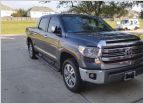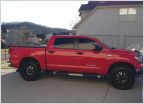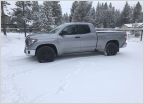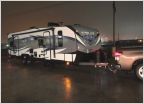-
Welcome to Tundras.com!
You are currently viewing as a guest! To get full-access, you need to register for a FREE account.
As a registered member, you’ll be able to:- Participate in all Tundra discussion topics
- Transfer over your build thread from a different forum to this one
- Communicate privately with other Tundra owners from around the world
- Post your own photos in our Members Gallery
- Access all special features of the site
Excited owner of 2011 Tundra- 1st time in
Discussion in 'New Member Introductions' started by Misnomer5, Jul 7, 2025 at 11:28 AM.


 New from Houston, TX (Northwest)
New from Houston, TX (Northwest) New Tundra owner checking in
New Tundra owner checking in Just joined Tundra forum. I am a proud owner of a 2nd and 3rd generation Tundra.
Just joined Tundra forum. I am a proud owner of a 2nd and 3rd generation Tundra. Coil pack melted
Coil pack melted New from Oregon
New from Oregon Toyhauler
Toyhauler













































































